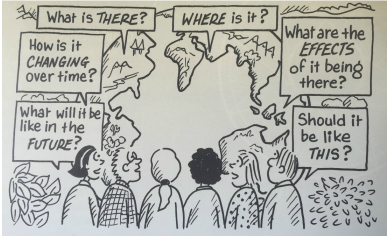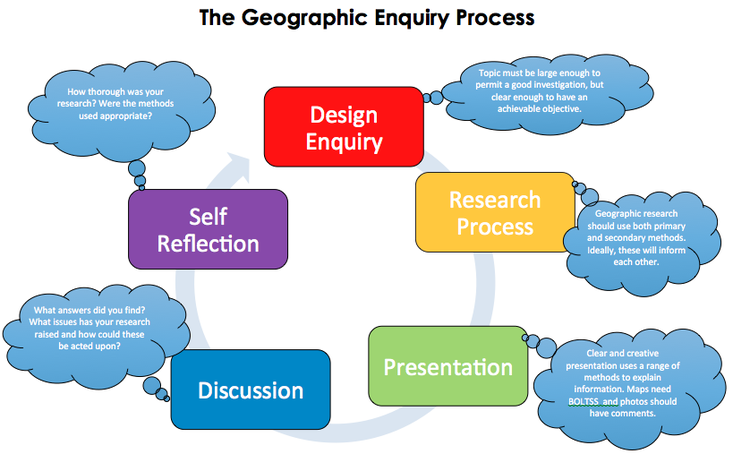1. Forming enquiry topics

Your topic of inquiry will be determined by a number of things:
Students should also read widely when starting a topic as this will build a vocabulary and raise your awareness of different perspectives within the topic.
Good geographical focus questions will usually investigate differences over space, changes over time or human impacts on the feature.
- What are the parameters of your task?
- What interests you?
- What will you be able to investigate practically?
Students should also read widely when starting a topic as this will build a vocabulary and raise your awareness of different perspectives within the topic.
Good geographical focus questions will usually investigate differences over space, changes over time or human impacts on the feature.
2. Designing and collecting primary research
There are many ways to collect primary research and the methods selected will depend on the topic selected. Students should also conduct secondary research prior to designing their primary research.
Google forms and survey monkey now make primary research very easy.
- Questionnaires
- Interviews
- Counting methods
- Observation methods
- Biophysical testing
- Transect sampling
- Quadrat sampling
Google forms and survey monkey now make primary research very easy.
3. Collecting secondary research
It is vital that you learn to visit a range of information sources and recognise reliable sources.
Students need to ensure they find relevant and useful sources that are on the topic of the focus question, rather than trying to find information and make it relate to the topic.
Using boolean operators ("and", "not", "exactly") helps in finding appropriate and relevant articles.
- Government departments
- NGO research
- Journal articles
- Newspaper articles
- Interest group websites
Students need to ensure they find relevant and useful sources that are on the topic of the focus question, rather than trying to find information and make it relate to the topic.
Using boolean operators ("and", "not", "exactly") helps in finding appropriate and relevant articles.
4. Presenting your research
Research can be presented in a variety of ways. However, whether the researcher is using a report, a video, an extended response or even a blog there are some common expectations for presentation.
- A bibliography
- In-text referencing that supports your key points
- Maps, figures, tables, graphs and pictures are referred to within text and have a labelling system with captions.
- B.O.L.T.S.S. conventions are utilised for all maps.
- Creative presentation of information in diagrams, tables, word clouds, concept maps and so on.
